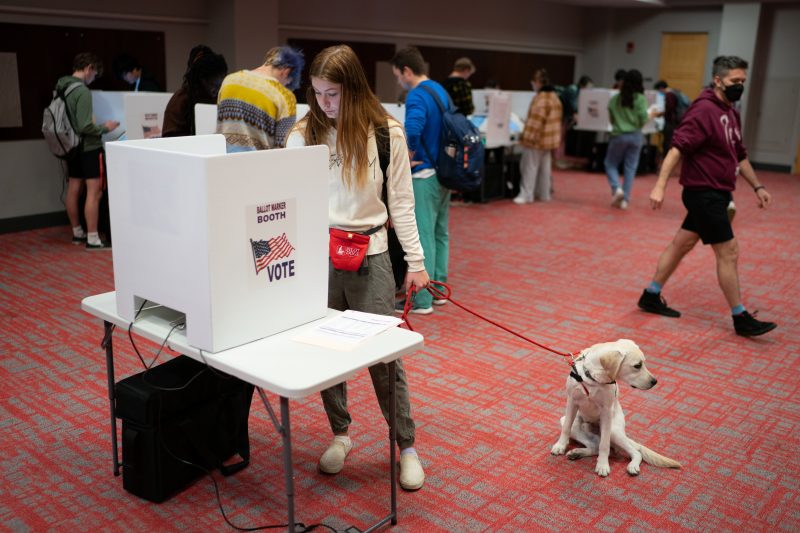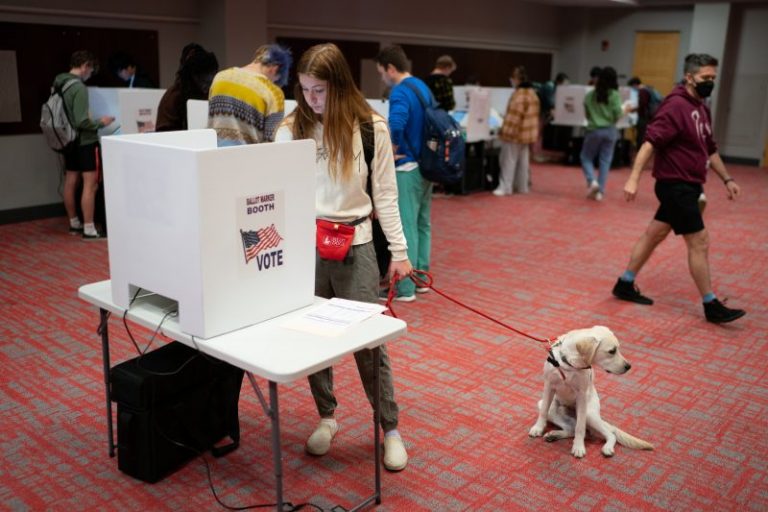
The Ohio Supreme Court on Monday ordered state officials to rewrite some of the language for an August ballot measure that, if passed, would make it more difficult to amend the state constitution.
The debate over the measure has become a proxy battle in recent months between Ohio Republicans, who hold a supermajority in the state legislature, and Democrats who have argued that it is an attempt to quash voter efforts to enshrine abortion rights into state law after the Supreme Court overturned Roe v. Wade.
The measure, known as State Issue 1, seeks to raise the threshold required to amend the state’s constitution through a ballot initiative to 60 percent of the vote. A ballot initiative now only has to pass with a simple majority. The proposal also would impose more-stringent requirements on how signatures are gathered for ballot initiative campaigns.
In a 4-3 decision, the Republican-majority state Supreme Court ruled Monday that the Ohio Ballot Board must rewrite inaccurate and misleading language in the ballot measure, which is scheduled for a vote in an Aug. 8 special election. The nonpartisan coalition One Person One Vote had filed a lawsuit last month arguing that the ballot language was misleading.
In its lawsuit, the group complained that the ballot language did not state what the law currently is; that it did not include the full text of the proposed amendment on the ballot; that it did not accurately describe the new number of elector signatures that would be required from each county; and that the title of the ballot — “Elevating the standards to qualify for and to pass any constitutional amendment” — suggested incorrectly that the amendment would make it more difficult to pass all proposed constitutional amendments, not just ballot initiatives.
In the Monday ruling, the Ohio Supreme Court agreed with One Person One Vote on several points, ordering the Ohio Ballot Board to correct the language describing the proposed changes to the signature-gathering process and to rename the ballot title so that it does not use the word “any” in reference to “constitutional amendment.”
However, the court rejected the group’s complaint that the use of the word “elevating” in the title suggested that the existing requirements were too low. The court also rejected the arguments that the ballot measure in August needed to state what the law currently is and include the full text of the proposed amendment. The three Democratic justices on the court dissented, saying they would have required more of the ballot language to be rewritten.
Still, One Person One Vote hailed the ruling Monday as a victory and vowed to continue the campaign to reject the ballot measure in August.
“The language politicians and special interests wanted on our ballots for Issue 1 was full of lies. We’re glad the Ohio Supreme Court saw through the deception and ordered changes,” the group said in a statement. “Ohioans must know: Issue 1 was designed to trick voters into giving away their rights — and the special interests who bought the August 8 special election will stop at nothing to end 100 years of majority rule in Ohio.”
Ohio Secretary of State Frank LaRose (R), the chair of the five-member Ohio Ballot Board, will convene the board Tuesday to rewrite the ballot language in compliance with the court’s order, according to his office.
“Our goal in approving the ballot language for Issue 1 was to make it as clear and concise as possible,” LaRose spokesman Rob Nichols said in an email. “The court has ordered us to put a more complex explanation on the ballot, which we know can often lead to voter confusion, but we’ll follow the court’s directive.”
Ohio is among several states where lawmakers have been seeking to make it more difficult to pass citizen-led initiatives after liberal policies — from protecting abortion rights to expanding Medicaid to raising the minimum wage — won at the ballot box across the country. Efforts to raise the bar to amend state constitutions have cropped up during legislative sessions in recent years.
If such efforts prevail, it could throw a wrench into one of abortion rights groups’ key strategies for restoring access to the procedure in states where it’s banned. Since Roe v. Wade was overturned, advocates have been exploring ballot measures to enshrine the procedure’s legality into state constitutions in at least a dozen states.
Rachel Roubein contributed to this report.


Comments are closed.